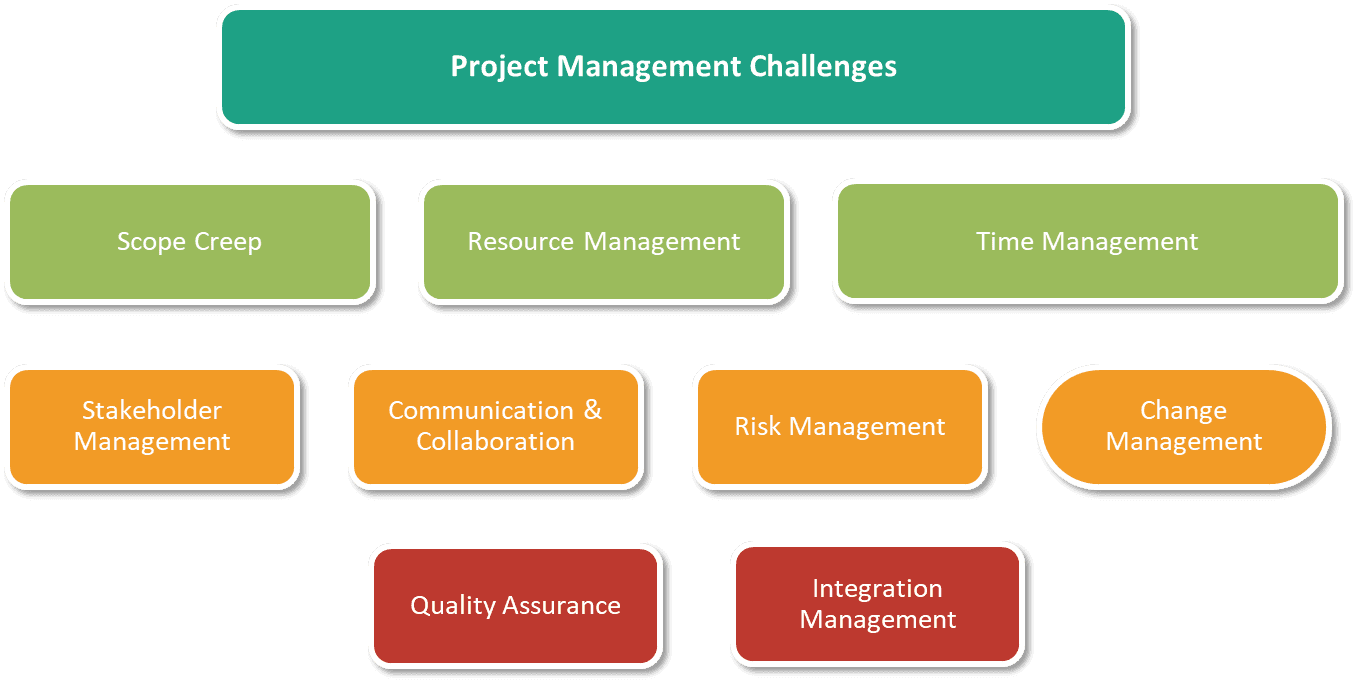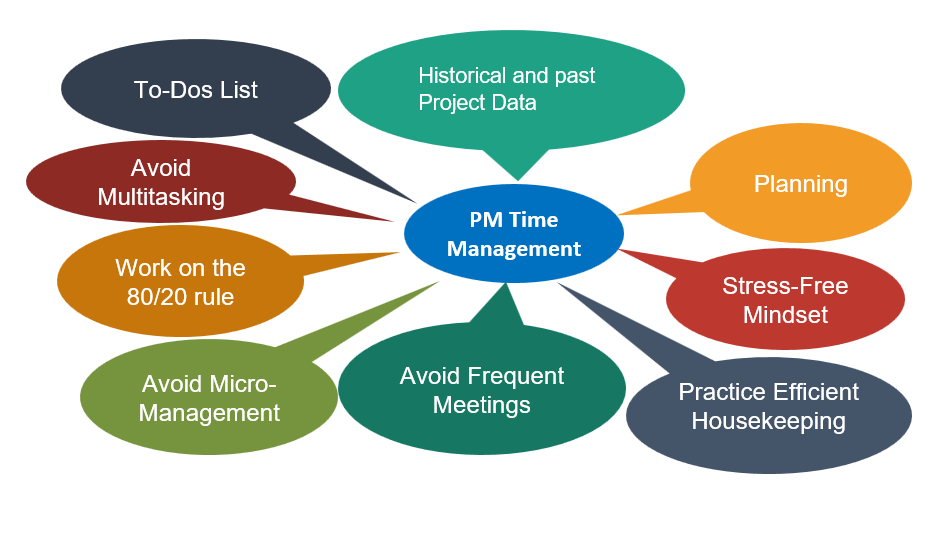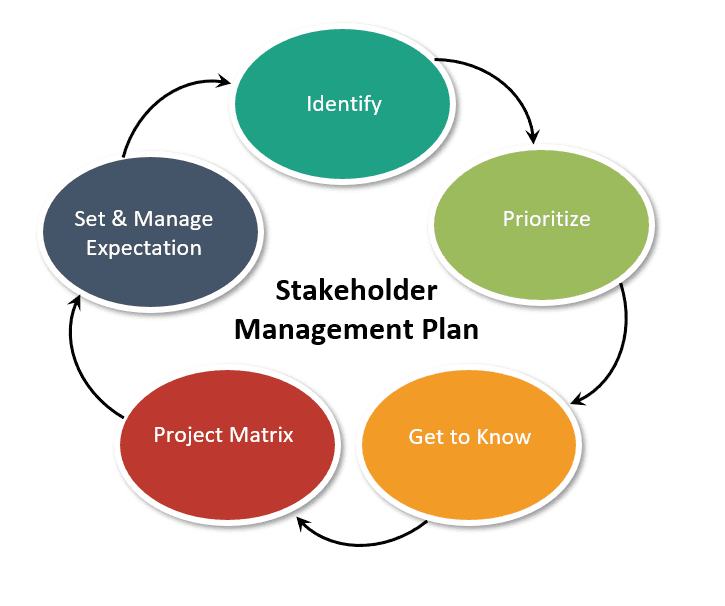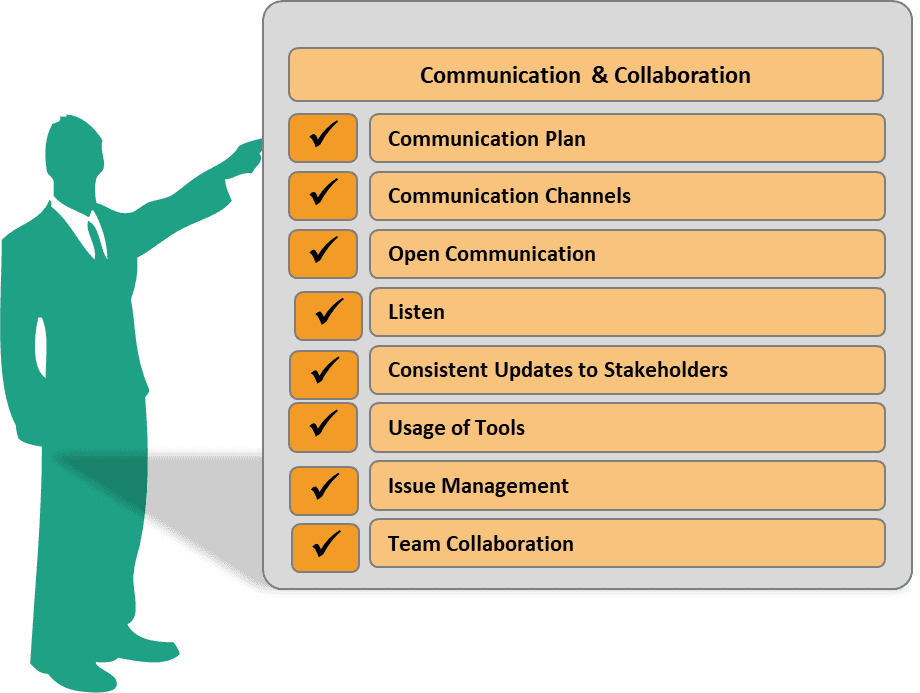- Published on
Project management challenges and how to manage it
- Authors
- Written by :
- Name
- Deepika Gupta
Project Management Challenges and How to Overcome
Being part of project management and delivery for almost 12 years, I have encountered multiple challenges during the project lifecycle and found different ways to handle various challenges.
The challenges we face as product owners or project managers are more or less the same irrespective of the project's size, type, or client. However, our solutions and strategies to overcome challenges can provide a more productive and successful project without impacting time and cost.
Project management involves various challenges that project managers commonly encounter. Here are some of the key challenges in project management:

Scope Creep
Challenge
- Scope creep refers to continuously expanding a project's scope beyond its initial requirements. It can lead to timeline delays, budget overruns, and resource allocation issues. Managing and controlling scope changes throughout the project is crucial.
- Most scope creep happens on the fixed timeline project, where even the requirement has been documented and agreed upon. Some use cases, scenarios, or business needs should be covered or included during the requirement phase.
- This not only caused a pace of development but also caused lots of time in back and forth to come on the same page whether this new add-on will be added or not.
Suggestions

- Clearly define and document the project scope
- Cover all use cases and scenarios
- Cover and confirm out-of-scope items too
- Discuss use cases which may not be part of the current phase but can be added in the upcoming stage. It helps in two ways: you have initiated backlog for the next stage, and if anything new between the current phase is already documented for the upcoming step. This way, negotiation to manage scope creep will be easy
- Develop a formal change control process to evaluate and manage scope changes
- Please discuss with the product owner/client the priority of the changes; either we can part it for later, or it's a must-have
- Define the requirement in detail and document
- Estimate the time and cost for the same
- Agree with the product owner for the same
- Regularly review and update the project scope with input from stakeholders
- Keep updated on the requirement document and project schedule
- Meet with all relevant stakeholders weekly, biweekly, or monthly to review the FRD and project schedule, clearly indicating the current status
- Any minor change should be updated in the FRD and agreed upon
Resource Allocation
Allocating the right resources to the project can be challenging. Balancing the availability and skills of team members, equipment, and budget constraints requires careful planning and coordination. There are multiple advantages, as mentioned below:
- Avoids unforeseen hiccups: By understanding your resources upfront and planning how to use them, you can troubleshoot gaps or problems before they happen.
- Provides a safety net: Let's say the project was not successful due to a lack of resources (it happens). Planning and management establish that you did everything you could with what you had.
- Builds transparency: Other teams can gain visibility into your team's bandwidth and plan accordingly if your team is at maximum capacity or available to take on new projects.
- Measures efficiency: With a high-level understanding of what's needed to manage and execute an upcoming project, you can effectively plan and measure ROI and utilisation vs efficiency.
Resource Management Techniques

Allocation & Planning
- By evaluating available resources, capacity, resource schedule and the tasks that need to be completed, find the team members with the most relevant skills and ensure they have all the project resources they need when needed.
Resource Pooling
- Resource pooling involves sharing resources among multiple projects or teams. Rather than dedicating specific resources to a single project, resources are shared across multiple projects based on priority and availability. Resource pooling can help optimise resource utilisation and reduce the risk of over-allocating or under-utilising resources.
Performance review and feedback
- Establish a formal performance review process to provide constructive feedback to team members and identify areas for improvement.
- Regularly provide feedback to team members on their positive and negative performance.
- Encourage team members to provide feedback to each other to promote a culture of continuous improvement.
- Use performance positive and negative performance to track progress and identify areas for improvement.
- Provide opportunities for training and development to help team members improve their skills and knowledge.
Contingency Planning
- Contingency planning involves developing plans to address unforeseen events during a project. This includes developing backup plans, identifying potential risks, and developing strategies to mitigate those risks. It's essential to regularly review and update contingency plans throughout the project lifecycle to ensure effective risk management.
Training and upskill program
- Keep training and upskilling existing resources so that they can onboard as and when required.
- Have a formal training programme for employees to participate in different skill sets.
Levelling
- It is a technique to optimise resource allocation and balance resource demand with capacity. It involves adjusting the project schedule to minimise resource conflicts and ensure that resources are used effectively. Resource levelling can prevent over-allocating or under-utilising resources and reduce the risk of delays or missed deadlines. There are different ways to manage resource Levelling:
- Resource Scheduling
- Develop a resource schedule that identifies resource availability and demand over the project lifecycle.
- Resource Smoothing
- Resource smoothing involves adjusting the project schedule to minimise resource peaks and valleys. It involves delaying non-critical activities or adjusting task durations to reduce resource demand during peak periods.
- Resource smoothing can reduce the risk of resource conflicts and ensure that resources are used effectively.
- Resource Constrained Scheduling
- Resource-constrained scheduling involves adjusting the project schedule to account for resource constraints. It involves prioritising activities based on resource availability and balancing resource demand with capacity.
- Resource-constrained scheduling can prevent over-allocating or under-utilising resources and reduce the risk of delays or missed deadlines.
- Resource Scheduling
- It is a technique to optimise resource allocation and balance resource demand with capacity. It involves adjusting the project schedule to minimise resource conflicts and ensure that resources are used effectively. Resource levelling can prevent over-allocating or under-utilising resources and reduce the risk of delays or missed deadlines. There are different ways to manage resource Levelling:
Forecasting
- Resource forecasting involves predicting resource needs and availability over the project lifecycle.
- Resource Forecasting Techniques:
- Resource Load Charting: Resource load charting involves creating a graphical representation of resource availability and demand over the project lifecycle. It allows project managers to visualise resource constraints and identify potential resource conflicts.
- Resource Histograms: Resource histograms involve creating a visual representation of resource utilisation over the project lifecycle. It allows project managers to identify resource peaks and valleys and adjust the project schedule accordingly.
- Resource Modelling: Resource modelling involves developing complex mathematical models to predict resource needs and availability over the project lifecycle. It utilises historical data to predict future resource requirements and can help project managers make data-driven decisions.
- Resource Forecasting Techniques:
- Resource forecasting involves predicting resource needs and availability over the project lifecycle.
Time Management
- The project Manager's time management is critical to project success. Developing a realistic project schedule, managing dependencies, and effectively tracking progress can be difficult. Unforeseen delays, bottlenecks, and scheduling conflicts can hinder project timelines.
- The following practice can help you as a Project Manager to understand how you can use your time more effectively when running a project. Plan the project, your time, and your team's time effectively, and you are on the way to delivering a successful, timely project.

Planning
The most important task is to plan your project and schedule each lesson. Each milestone should be designed so that all project stakeholders know what is expected from them. The clear and precise information saves many Project managers time to address issues and run the project more efficiently.
Historical and Past project data
PM should always take learning and take away thing that works successfully in another project. Incorporate past knowledge with a new initiative. In addition, it will prevent making a mistake as you will know beforehand that things haven't worked in the past.
To-Do's list
- One of the best techniques for managing your daily time productivity is to list the tasks you must complete. This helps to keep us focused on the target objectives, which will automatically increase your productivity.
- You may also use the Eisenhower matrix to prioritise tasks. The matrix is split into four categories:
- Important and urgent
- Important but not urgent
- Not important but urgent
- Not important and not urgent
Avoid Frequent Meetings
Being part of the project team, especially in the Agile model, we can't avoid meetings. However, we should avoid having unnecessary long and frequent meetings. Always have a set agenda and time duration before the meeting and ensure that members stick to the same.
Work on the 80/20 rule
- The 80/20 rule posits that focusing on the 20% of the work that matters most will create 80% of the results. You should concentrate on the tasks most important to project success to use your time effectively.
- This rule also applies to staff and yourself. Work should be scheduled at 80% of your contracted daily hours. This leaves time for last-minute requests and allows for work outside the project, such as catching up with emails, attending meetings or self-development.
Avoid Micro-Management
- As a Project manager, you should only need to know some minute detail of the project. The team is competent, so let them do their task as a Project Manager. We should focus on the broader project.
- The focus should be on something other than micro-management but on keeping a keen eye on the overall project to ensure successful delivery.
Avoid multitasking
- There are instances where multi-tasking provides quick results. But it usually provides immediate results at the cost of a quality outcome.
- The human brain needs time to switch from one task to another. If you are trying to close many tasks at once, it will indeed cause the efficiency of the task.
- Keep the focus on one task before moving to another, and we can see that all functions are complete with the expected outcome.
Practice efficient housekeeping
- Frequent housekeeping helps the Project Manager to be more organised and aware of things which need immediate attention. It helps to avoid last-minute gaps and confusion.
- The Japanese Methodology of 5S effectively manages your housekeeping. It consists of five steps:
- “Seiri” - sort
- “Seiton” - Straighten, set
- “Seiso” - shine, sweep
- “Seiketsu” - standardise
- “Shitsuke” - maintain
Stress-free Mindset
- Stress is a critical trigger in reducing productivity in the workplace, and more importantly, it can seriously affect your health.
- Take regular breaks throughout the day, particularly at the end of tasks, and try to switch off outside work hours to ensure you return to the project refreshed.
Stakeholder Management
Project Managers involve various stakeholders with different interests and expectations. Managing stakeholder expectations, maintaining effective communication, and addressing conflicts or resistance can be demanding.
There are two types of stakeholders in the project:
- Internal: Working on the project and directly associated with the company like project team, support or operation team
- External: Working on a project but not directly associated with the Company, like clients, vendors, consultants, etc.
To manage the stakeholders, the PM needs to create a Stakeholders Management Plan, which consists of the following:

Identify Stakeholders
Identify the critical Stakeholders of the project to evaluate their roles and responsibilities and how they will impact the project.
Prioritise your Stakeholders
Prioritise the stakeholders based on their influence over the project. At different stages of the project, the stakeholder's influences can become more or less. As a Project Manager, you should be able to monitor the stakeholders with the highest impact on your project.
Know your Stakeholders
It could be challenging to work with new stakeholders as we are unaware of their way of working. Knowing about your stakeholders to manage effective management within the project. Have a conversation with them. Here are some examples:
- What is your understanding about the project?
- Do you find anything challenging about the project?
- Which key deliverables you are more interested in?
Project Interest Matrix
This chart allows us to understand the power, decision making and interest of the stakeholders in the project. You can identify these four stakeholder groups using this tool. They're listed by importance.
- High-power, high-interest stakeholders
- High-power, low-interest stakeholders
- Low-power, high-interest stakeholders
- Low-power, low-interest stakeholders
Set & Manage Expectations
Create a communication plan at the initial stage of the project which defines the following:
- Each stakeholder's task and accountability at different stages of the project.
- Each stakeholder is responsible for different stages of the project.
Risk Management
Identifying and mitigating risks is crucial for project success. Assessing potential risks, developing contingency plans, and monitoring risk throughout the project lifecycle can be challenging. Uncertainties and unexpected events can impact project outcomes.
Risk Mitigation Techniques

Identify Risks
The first step in risk mitigation is identifying the potential risks that could impact the project. This can be done by reviewing past projects, brainstorming with the project team, and conducting a risk assessment.
Assess Risks
Once risks have been identified, they must be assessed to determine their likelihood and impact on the project. This information can be used to prioritise risks and develop mitigation strategies.
Develop a Risk Management Plan
A risk management plan outlines how risks will be identified, assessed, and managed throughout the project lifecycle. It should include roles, responsibilities, risk mitigation strategies, and contingency plans.
Implement Risk Mitigation Strategies
Risk mitigation strategies should, responsibilities, risk mitigation strategies, and contingency plans be implemented as soon as possible to minimise the impact of potential risks. This may involve changing the project scope, adjusting timelines, or allocating additional resources.
Monitor Risks
Risks should be monitored throughout the project lifecycle to ensure that mitigation strategies are effective. This may involve regular risk assessments, project status reports, and stakeholder meetings.
Communicate Risks
Project managers should communicate risks and risk mitigation strategies to stakeholders throughout the project lifecycle. This can help manage expectations, build trust, and ensure everyone knows potential risks.
Communication and Collaboration
Effective communication among team members, stakeholders, and project managers is vital. Ensuring precise and timely communication, facilitating collaboration, and addressing conflicts or misunderstandings can be demanding, especially in geographically dispersed or multicultural teams.
Effective communication strategies are crucial for project success. Here are some suggestions:

Communication Plan
Develop a communication plan at the start of the project that outlines the frequency and format of communication and the target audience.
Communication Channels
Use a variety of communication channels, such as email, phone, video conferencing, and in-person meetings, to ensure that everyone is informed and up-to-date.
Open Communication
Encourage open and honest communication among team members and stakeholders. This can help avoid misunderstandings and conflicts.
Listen
Use active listening techniques to ensure that everyone feels heard and understood.
Consistent Updates
Provide regular project status updates to stakeholders, including progress reports and any project scope or timeline changes like shared documents and project management software.
Tools
Collaboration tools like shared documents and project management software facilitate teamwork and communication.
Issue management
Develop a formal issue management process to address and resolve any problems arising during the project.
Team collaboration
Schedule regular team meetings and check-ins to ensure everyone is on the same page and any issues are addressed promptly.
Change Management
Projects often require processes, systems, or organisational structure changes. Managing change and ensuring smooth transitions can be challenging. Resistance to change, lack of buy-in, or inadequate change management strategies can hinder project progress. Change management involves managing processes, systems, or organisational structure changes during a project. This can be challenging and requires effective communication and buy-in from stakeholders. Here are some best practices for change management:
- Define scope and take a sign-off of the respective accountable stakeholder. Managing a change request can be tricky sometimes, significantly when it impacts the time and cost of the project. A well-defined and documented scope of work can save lots of time and misunderstanding among stakeholders while addressing any new change request
- Precise and clear communication of the need for change clearly to all stakeholders
- Involve stakeholders in the change management process to ensure buy-in and ownership
- Develop a clear plan for implementing the change, including timelines and responsibilities
- Monitor the change and make adjustments as necessary to ensure that it is successful
- Evaluate the effectiveness of the change after it has been implemented to identify areas for improvement
Quality Assurance
Maintaining and delivering the expected quality is crucial. Implementing effective quality assurance processes, ensuring adherence to standards, and managing quality control can be challenging, especially in complex projects with multiple deliverables.
Quality assurance ensures that project deliverables meet the required standards and expectations. Effective quality assurance processes involve:

Quality Assurance Plan
Developing a quality assurance plan that outlines the quality standards and procedures that will be followed throughout the project.
Reference: What is Quality Assurance (QA) in Project Management?
Frequent Reviews
Conducting regular quality reviews to ensure that project deliverables meet the required standards and specifications.
Quality Matrix
Establishing quality metrics and key performance indicators (KPIs) to measure the effectiveness of quality assurance processes.
Reference: Quality Metrics- What They Are and How To Use Them
Continuous Training & Learning
Providing ongoing training and support ensures that team members understand and adhere to quality standards and procedures.
Revisit & Improve
Implementing a continuous improvement process to identify and address quality issues and improve the overall quality of project deliverables.
Integration Management
Integrating various project components, teams, and work streams can be complex. Coordinating efforts, ensuring compatibility, and managing dependencies across different project areas can pose significant challenges.
Integration Management involves coordinating different project components, teams, and work streams to ensure compatibility and manage dependencies. Here are some suggestions for effective Integration Management:
- Develop a comprehensive project plan that integrates all project components and activities
- Establish clear communication channels and protocols to facilitate collaboration among teams and stakeholders
- Identify potential integration issues and dependencies early in the project lifecycle and develop plans to address them
- Monitor project progress and integration continuously and adjust plans as necessary
- Review and update project documentation regularly to ensure all stakeholders can access current information
- Implement a change control process to manage changes to project components and activities and ensure that they are integrated seamlessly
- Conduct regular project reviews to identify and address integration issues and ensure the project is on track
Remember, project management challenges are inevitable, but with proper planning, effective communication, and proactive management, you can overcome them and ensure successful project delivery
